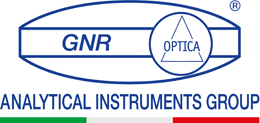GNR to Participate in the Netherlands Conference: Exploring XRD Technology for Residual Stress and Retained Austenite Measurement
We are pleased to announce GNR’s participation in the upcoming conference on September 26, 2024, organized by the Netherlands Association of Foundry Technicians (NAFT) in the Netherlands. This event will focus on advanced testing methods related to heat treatment, beyond traditional hardness testing and optical microscopy. The conference will take place at Ketelhuis Eindhoven, Landgoed de Grote Beek, Doctor Poletlaan 45, 5626 NC Eindhoven.
An Opportunity to Delve into XRD Analysis
Alessandro Torboli from GNR will deliver a presentation on innovative technologies and solutions through X-ray Diffraction (XRD) analysis of residual stress and retained austenite. He will conduct a demonstration using the EDGE instrument, produced by GNR.
Edge is the new GNR portable residual stress analyzer. It is a portable Theta/Theta X-ray diffractometer: it allows performing reliable measurements on production samples and specimens to determine residual stress, retained austenite and to investigate alloys structure and phase composition.
The instrument is compliant to ASTM E915, UNI EN 15305 (residual stress standard practices) and ASTM E975 – 13 (retained austenite standard practice).
Theoretical Basics of the XRD Method
X-ray diffraction is a well-established technique for studying crystalline structures, with applications across various fields, including the heat treatment of metallic materials. Specifically, Residual-Stress analysis allows for measuring internal stresses present in a material after processes such as quenching and mechanical work. Retained-Austenite detection helps monitor the microstructure of materials and ensure their stability after heat treatment.
The presentation will cover the fundamental physical principles behind XRD and how this method distinguishes itself from other analysis techniques in terms of accuracy and reliability.
Applicable International Standards
A crucial aspect of XRD analysis is compliance with international standards. We will outline the main guidelines that govern the use of this technology for measuring residual stress and retained austenite, including:
- ASTM E915 – Standard test method for retained austenite measurement by XRD.
- EN 15305 – European standard for residual stress measurement by X-ray diffraction.
Integration of XRD Solutions into Testing Instruments
One key focus will be the integration of our XRD solutions into industrial testing processes. We will explain how our developed instruments are designed to optimize the measurement of Residual-Stress and Retained-Austenite, ensuring accuracy and repeatability in results.
We will also discuss why our solutions are particularly suited for these applications and how they stand out from other market technologies, with a purely technical focus.
Working Principle and Capabilities
Our XRD technology is based on measuring the diffraction angles of X-rays emitted onto metallic samples. Variations in these angles, caused by lattice deformations, provide detailed insights into residual stresses or the amount of retained austenite present. This non-destructive method allows for precise data collection without compromising the integrity of the material.
Additionally, we will discuss the various practical applications of this method in the automotive, aerospace, and mechanical sectors, highlighting its benefits for quality control and product reliability.
Practical Applications: Examples and Results
We will present concrete examples of analyses performed on heat-treated metallic components, focusing on results obtained in key sectors such as transmission and automotive parts manufacturing. This will demonstrate the effectiveness of our XRD technology in detecting both residual stress and retained austenite, offering solutions to improve product quality.
Participation and Involved Companies
Major industry leaders such as Aalberts, Bodycote, SKF, Nedschroef, VCST, Bosch Transmissions, Punch Powertrain, DAF, BMT Eurair, Pro-ferro, and Ventec will be present.
This event represents a unique opportunity to deepen knowledge of advanced testing methodologies for heat treatment and to share experiences with industry experts.


